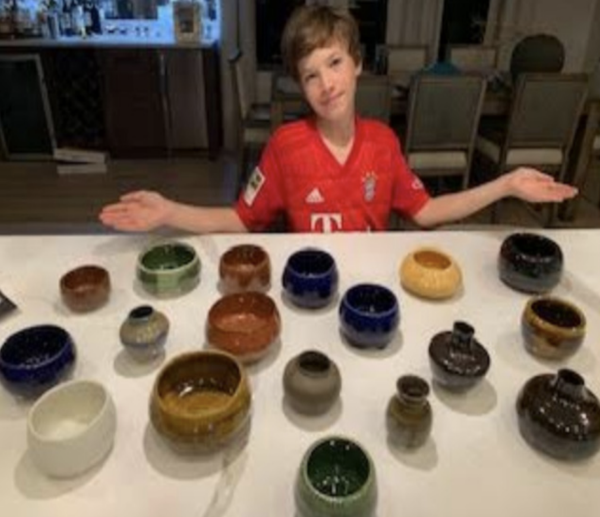Art electives at Taft are copious, with a variety of types and levels. Requiring an art credit generates a pool of vastly different skills and enthusiasm. Some are delighted to enhance their artistic technique: an expanded knowledge of film and photography, or ability to perform in front of people. Others, however, are more reluctant to accept a new horizon of artistic comprehension: taking leisurely bathroom breaks, staring out the window with yearning, or possessing an expression filled with suffering. It depends on who you talk to. Some people might not call themselves artists but love their 3D design class. Some people might dislike art and are currently disliking their art class of choice. Some people might love art and are thoroughly enjoying and succeeding in their advanced ceramics class.

The latter would be Wilson Littman ‘28, a student not only with talent but with passion and recognition for the power of art. Wilson started ceramics in 3rd grade, in part due to his art teacher who allowed him to harness his ability by giving him lessons on how to use the ceramics wheel. It was quickly clear that Wilson was very good at ceramics and creating things, being the youngest artist to give a live demonstration at a local art show in Big Sky, Montana. When he came to Taft, he swiftly rose to one of the best in his class, with many other students observing his proficiency in ceramics. At holidays, Wilson gifts pieces to his family, solidifying the fact that homemade gifts are the best ones.
Besides having this talent that allows him to create functioning and beautiful pieces, Wilson recognizes that art is a great way to decompress. In any art class, but especially in the visual arts where one is actively creating something, whether it be a painting or a mug, there is an environmental shift. You walk up the stairs from the English wing into the well-lit, apron-lined ceramics room and it feels different. Entering the painting and drawing room–with art mounted on the walls and its high ceilings–elicits a feeling of calmness. Although just meters away from desk-filled and homework-loving classrooms, art rooms give students an opportunity to briefly leave behind the stress and try to take something from within and bring it out.
Talking to Wilson made me realize that the origins of one’s interest in any activity–art, sports, etc–is something that is immensely interesting, and really lets one see the avidity someone possesses. Once you realize why someone loves something so much, seeing the diligent effort they put in to learn more, improve, and succeed is an intangible way to bring joy into your life.